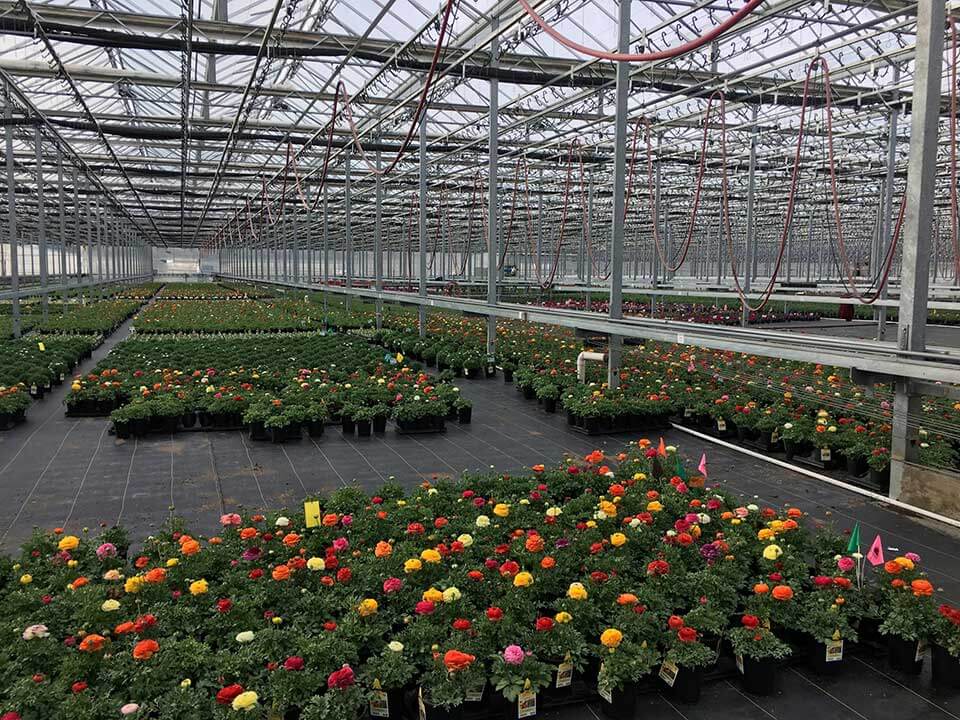
DLI is usually calculated by measuring the photosynthetic photon flux density (PPFD) in μmol·m−2·s−1 (number of photons in the PAR range received in a square meter per second) as it changes throughout the day, and then using that to calculate total estimated number of photons in the PAR range received over a 24-hour period for a specific area. In other words, DLI describes the sum of the per second PPFD measurements during a 24-hour period.[2]
If the photosynthetic light intensity stays the same for the entire 24-hour period, DLI in mol m−2 d−1 can be estimated from the instantaneous PPFD from the following equation: μmol m−2 s−1 multiplied by 86,400 (number of seconds in a day) and divided by 1,000,000 (number of μmol in a mol). Thus, 1 μmol m−2 s−1 = 0.0864 mol m−2 d−1 if light intensity stays the same for the entire 24 hour period.
PPFD is usually expressed as the photon flux per second. This is a convenient time scale when measuring short-term changes in photosynthesis in gas exchange systems, but falls short when the light climate for plant growth has to be characterized. First because it does not take into account the length of the day light period, but foremost because light intensity in the field or in glasshouses changes so much diurnally and from day to day. Scientists have tried to solve this by reporting light intensity measured for one or more sunny days at noon, but this is grasping the light level for only a very short period of the day. Daily light integral includes both the diurnal variation and day length, and can also be reported as a mean value per month or over an entire experiment. It has been shown to be better related to plant growth and morphology than PPFD at any moment or day length alone.
In the above example worksheet, you can see the reported DLI for the greenhouse location (-27.739, 152.661). The DLI values are collected from www.suntrackertech.com , our favorite tool for collecting most recent information on a specific location. We account for the most significant variable, Greenhouse Efficiency, and calculate the DLI deficit we need to over come with a supplemental lighting plan to reach the target DLI. The table section titled “Supplemental Lighting” will indicate via color coding (RED = target not hit GREEN = target hit) how many hours at the indicated PPFD is required to reach the target.
In this example you can see that in a 12 hour photoperiod, you would require a min. of 400PPFD of supplemental lighting to achieve the target DLI, with a maximum time period of 9.8 hours (June – remember this example is Australia). There are three months were no supplemental lighting should be required to hit 35 DLI inside the greenhouse. This information allows growers to control operating expenses (OPEX) by only scheduling supplemental light when needed, rather than the traditional on-12/off-12 365 style most commonly employed in greenhouse environments.
With a few key pieces of information we can generate a DLI supplemental lighting plan for any location globally. For a free analysis of your greenhouse supplemental requirements please click here!
References:
[2]Korczynski, Pamela C.; Logan, Joanne; Faust, James E. (2002-01-01). “Mapping Monthly Distribution of Daily Light Integrals across the Contiguous United States”. HortTechnology. 12 (1): 12–16. ISSN 1063-0198.
[1] Faust, James E.; Holcombe, Veronda; Rajapakse, Nihal C.; Layne, Desmond R. (2005-06-01). “The Effect of Daily Light Integral on Bedding Plant Growth and Flowering”. HortScience. 40 (3): 645–649. ISSN 0018-534


